By Kathryn Dolan, Chief Public Information Officer · Office of Communication, Education & Outreach
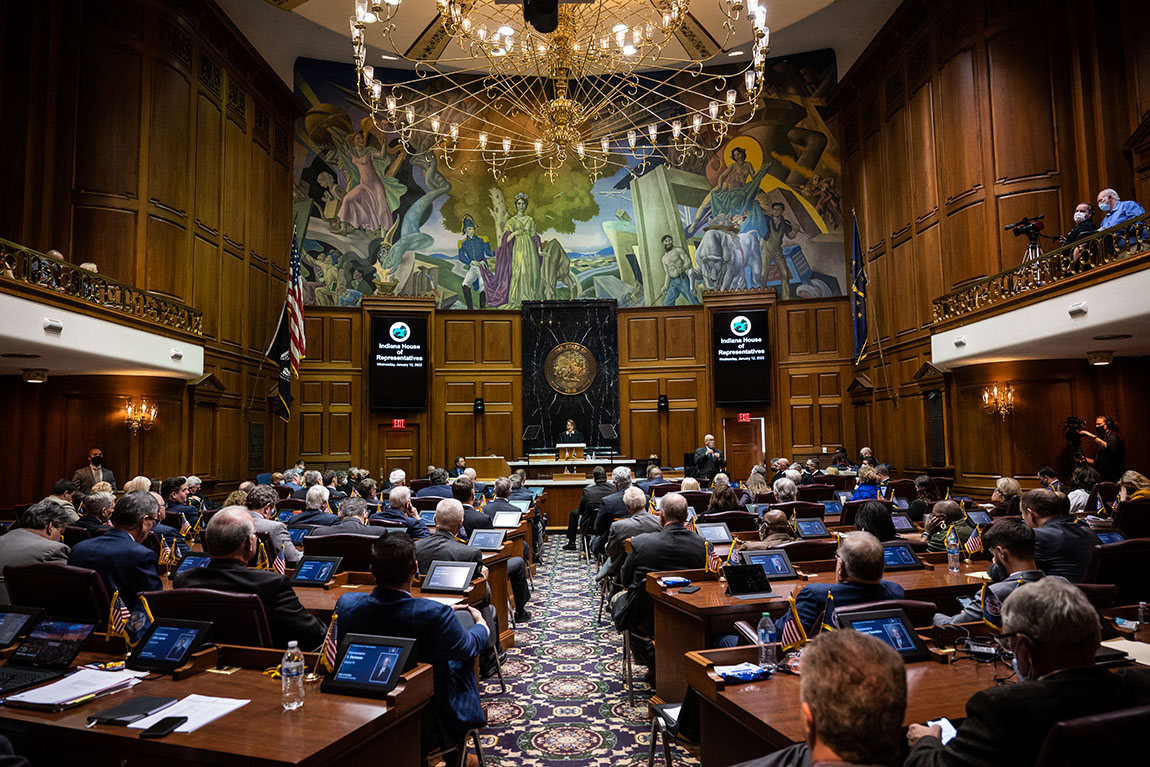
State of the Judiciary: A judiciary that perseveres
The annual State of the Judiciary allows Indiana’s Chief Justice an opportunity to highlight court initiatives and publicly thank justice partners. For Chief Justice Loretta Rush—who delivered her eighth State of the Judiciary on January 12—work on the speech begins much earlier than some people may expect. She explained, “the speech takes shape throughout the entire year as I hear from judges, staff, attorneys, lawmakers, and other justice stakeholders.”
What she heard over the past year prompted the Chief Justice to relay a blunt assessment for the Governor, Executive and Legislative Branches, and the other 85 people in the audience. She described an “increasingly complex array of criminal, business, family, housing, and debt cases. In many ways, courts have become the government emergency room for society’s worst afflictions. Substance abuse, mental health, domestic violence, homelessness—the challenges brought to courtrooms each day are the same challenges facing your constituents.” While candid, Rush’s assessment is not grim. Her optimism was apparent as she described a judiciary that is persevering. “And like you, we are determined to find solutions,” she explained.
Rush conveyed her belief in the power of state leaders to make life better for all Hoosiers. “We are one of the few states in the country where all three branches of government are housed in one building,” she said. “While each of our branches has independent obligations, our proximity to each other cultivates opportunities to work together in so many ways for the benefit of every Hoosier.”
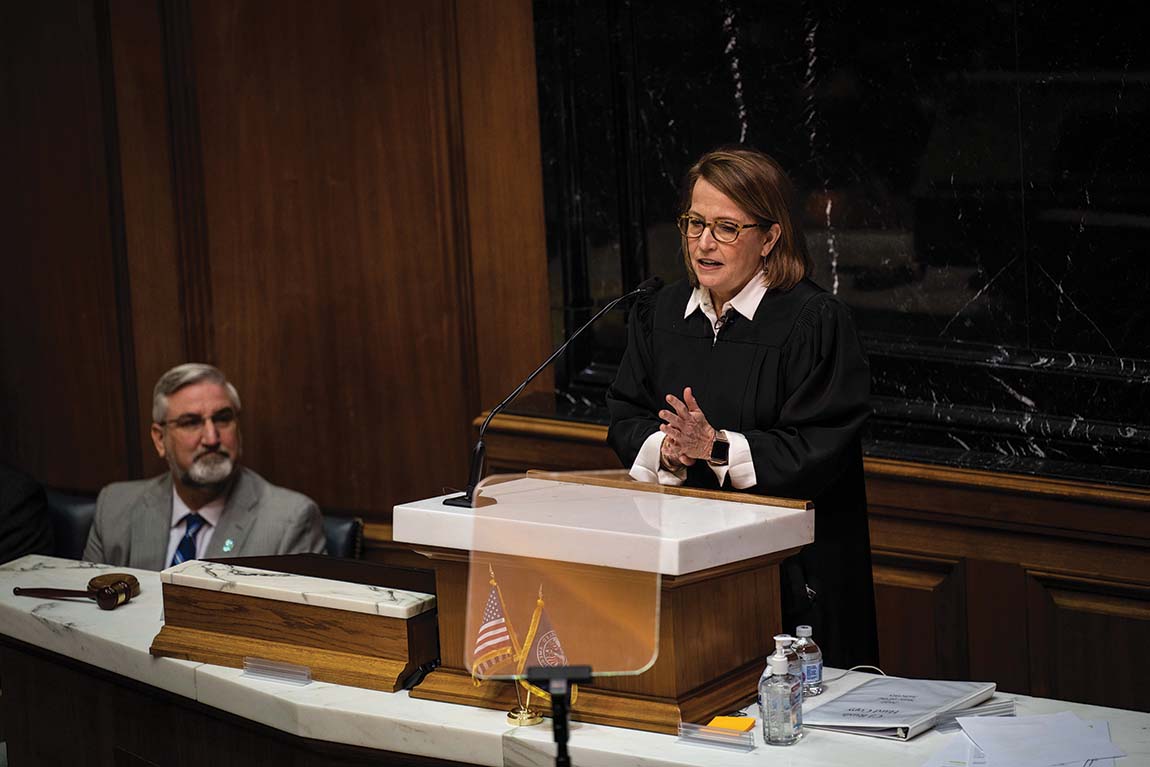
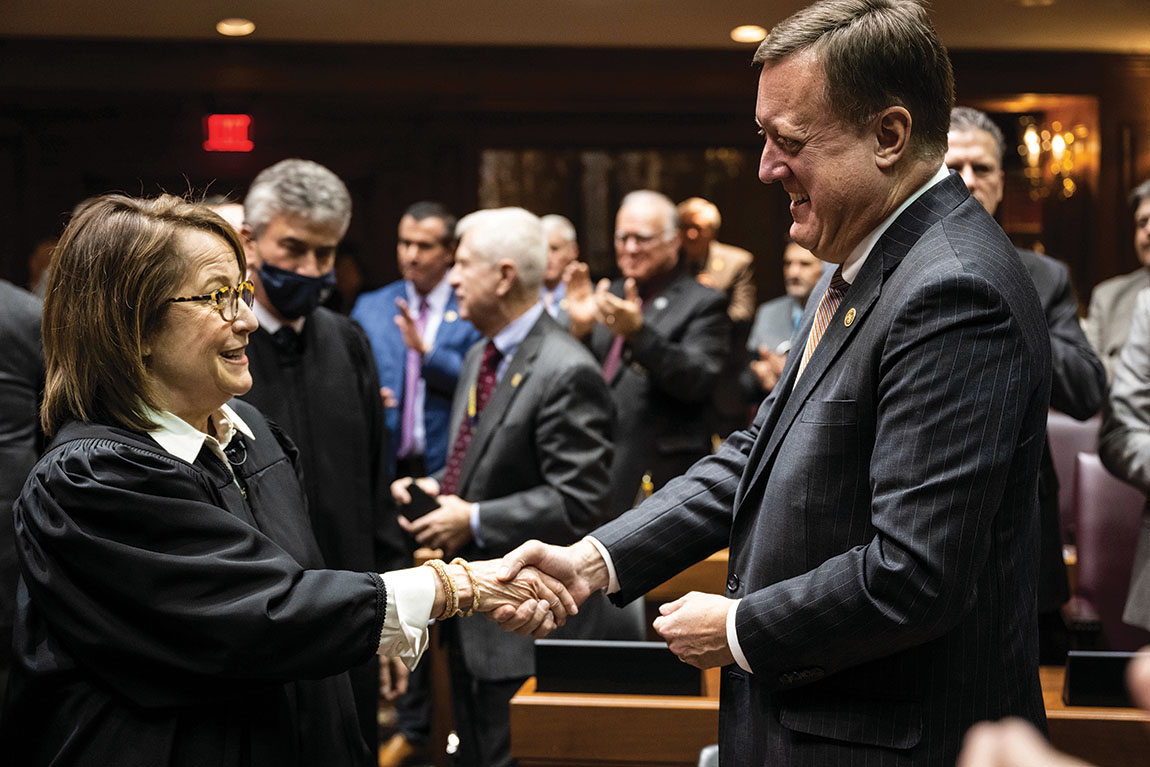
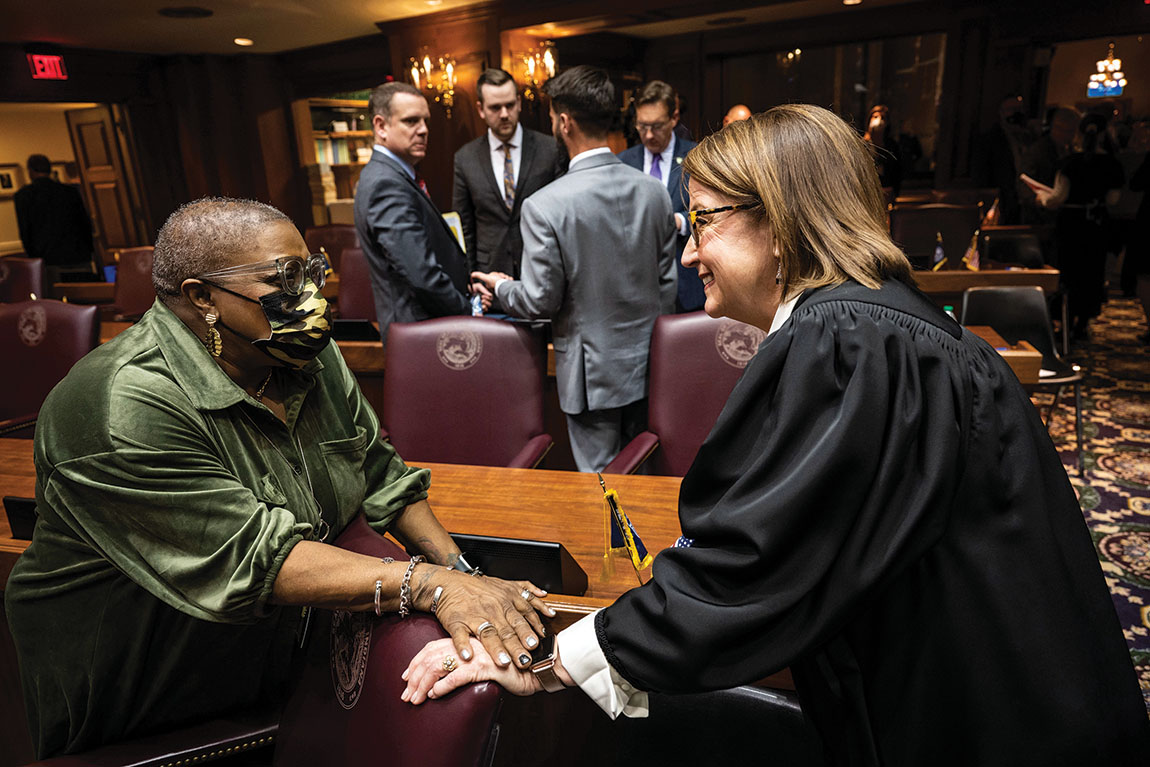
Open Courts Clause
Judges are often asked about their most important case. Most judges will politely refrain from holding out any one matter as more crucial than another. Likewise, Rush did not point to any specific case in the address; but she did note the volume of cases—2 million cases filed in trial courts since she last spoke to the joint session in person in 2020. “But success is not measured solely by the number of cases we decide,” she said, “the Indiana constitution’s open courts clause promises every Hoosier a fair, impartial, and accessible justice system.”
To achieve that requirement, Rush talked about the Court’s crucial administrative responsibilities. By increasing public trust, strengthening Hoosier families, improving public safety, and modernizing courts, the judicial system delivers on fulfilling its constitutional promises.
…the Indiana constitution’s open courts clause promises every Hoosier a fair, impartial, and accessible justice system.
A Tireless Champion of Justice
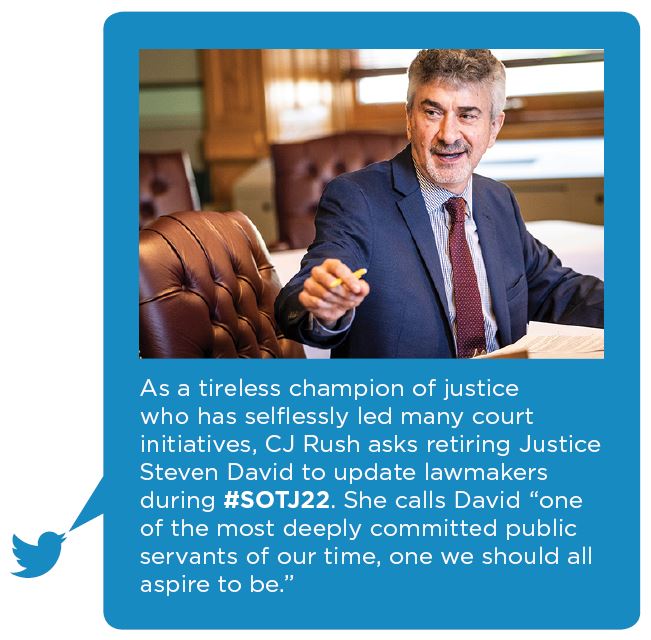
The audience erupted in applause with a standing ovation when Chief Justice Rush paid tribute to the work of retiring Justice Steven David. Praising him as “one of the most deeply committed public servants of our time—one we should all aspire to be,” she called him “a tireless champion of justice.” In an unprecedented tribute, calling him a selfless leader, she asked Justice David to come to the podium and provide an update on the work of the Court, including projects he has led. With appreciation, Justice David took over the microphone and admitted his pulse was racing!
Remarks from Justice David
Justice David provided an update on the efforts to modernize courts through technology. As he explained in his remarks, courts in every county now have electronic filing and a single case management system. They process about 140,000 electronic filings every week, and the mycase.in.gov website—with free online access to case records—was visited 34 million times in 2021.
The importance of problem-solving courts was relayed to the audience by Justice David’s personal experience. “As a veteran; the son of a veteran, the grandson of a veteran, the father of a veteran, the brother-in-law of veteran, and the son-in-law of a veteran; and the husband of a Navy officer who has been recalled to active duty for an extended period of time…I am truly grateful for your support of these profoundly impactful and life changing, indeed lifesaving programs.” With 139 certified and planned problem-solving courts, he explained “accountability and treatment are not mutually exclusive. Together, they are mutually successful!”
He described the efforts underway to protect due process and equal protection rights while maintaining public safety. Justice David described the plan to avoid “holding low-risk people in county jails.” With 12 counties certified as pretrial service agencies led by the courts and 30 more in the planning stages, the goal is to make sure that before trial, “the right people are in jail for the right reasons,” he said.
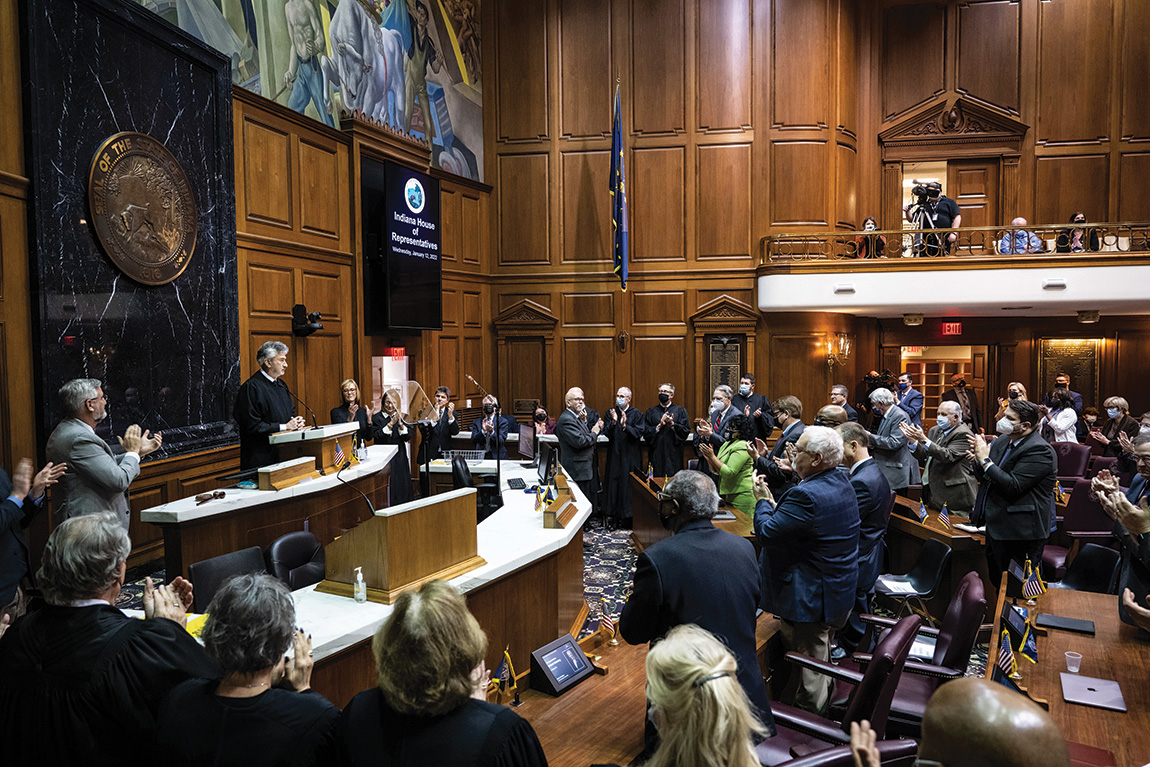
Thanking Justice Partners
For Chief Justice Rush, one of the most fulfilling aspects of delivering the State of the Judiciary is praising others. She explained, “I ask people who deserve our appreciation to stand during the address. Giving them public recognition for innovative work and dedication to the justice system is a way to convey how crucial their efforts are to judicial branch success.”
Efforts to improve the judiciary through the Commission on Equity and Access and the Jail Overcrowding Task Force were noted. The work of both entities includes efforts to ensure reliable data is available to guide policymakers. The Chief Justice also asked the audience to recognize the Eviction Task Force. “Indiana has some of the highest eviction rates in the country,” she explained. “To find solutions, we are devoting key resources to help landlords and tenants.”
Fixing a Broken Mental Health System
For her closing, Chief Justice Rush asked the state leaders in the room to consider a “remarkable opportunity” that would require them to work together. Rush described a broken mental health delivery system—with increased court cases, systemic delays, and a reliance on a local infrastructure never equipped to handle serious mental health matters. She said, “police officers are not social workers, and jails are not treatment centers. And when we ask them to be, we compromise their core function of preserving public safety which, in turn, puts everyone at risk.” She urged state leaders and local officials to transform the mental health system—in part—through the implementation of the national mental health hotline, known as 988. In October 2022, the Court is hosting a mental health summit—organized by state leaders in all three branches—to facilitate improvements.
Police officers are not social workers, and jails are not treatment centers. And when we ask them to be, we compromise their core function of preserving public safety, which, in turn, puts everyone at risk.
The 25-minute address provided an accurate update on the condition of Indiana’s courts—as required. But it also served to deliver something more, a window into the efforts to continually make improvements to Indiana’s justice system. Chief Justice Rush’s synopsis made clear: the judicial branch is strong but always striving to innovate and ensure access to justice for all.
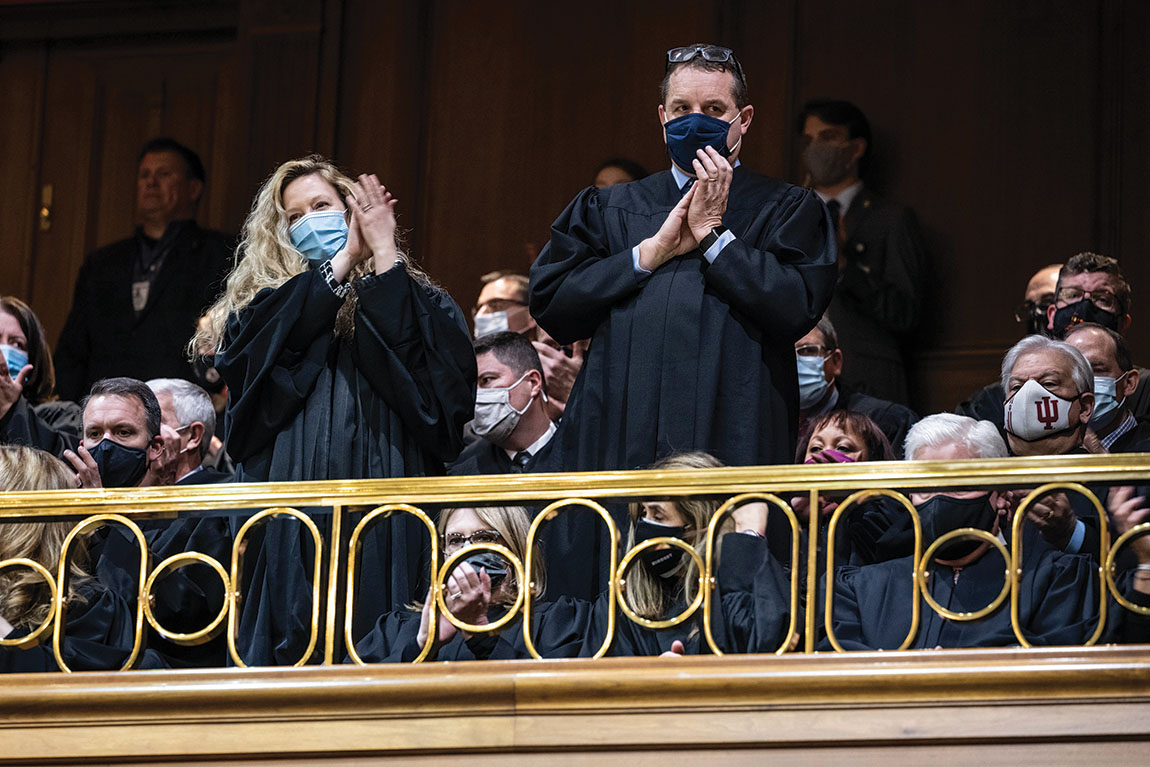
Watch or read the State of the Judiciary at on.in.gov/sotj22